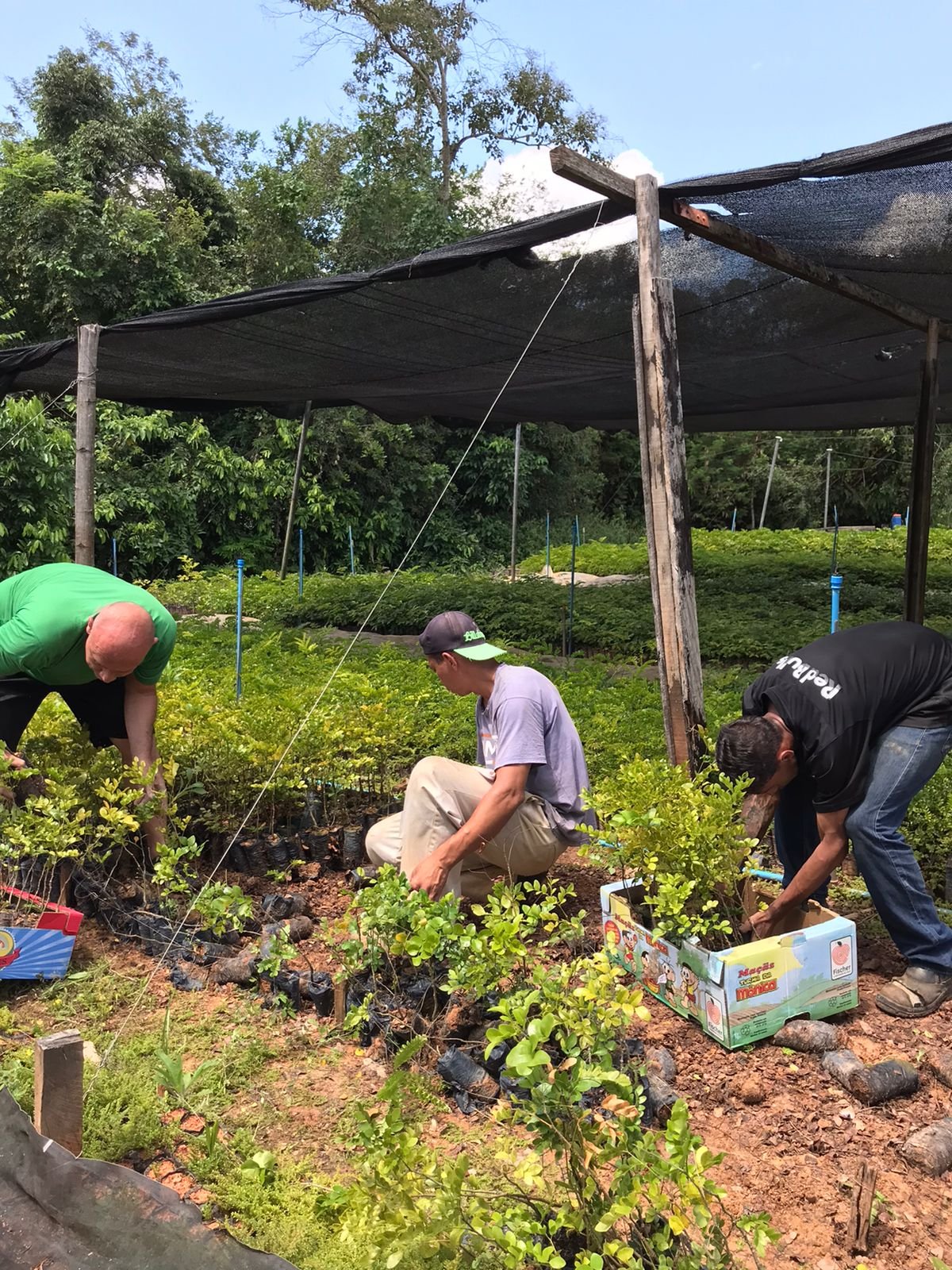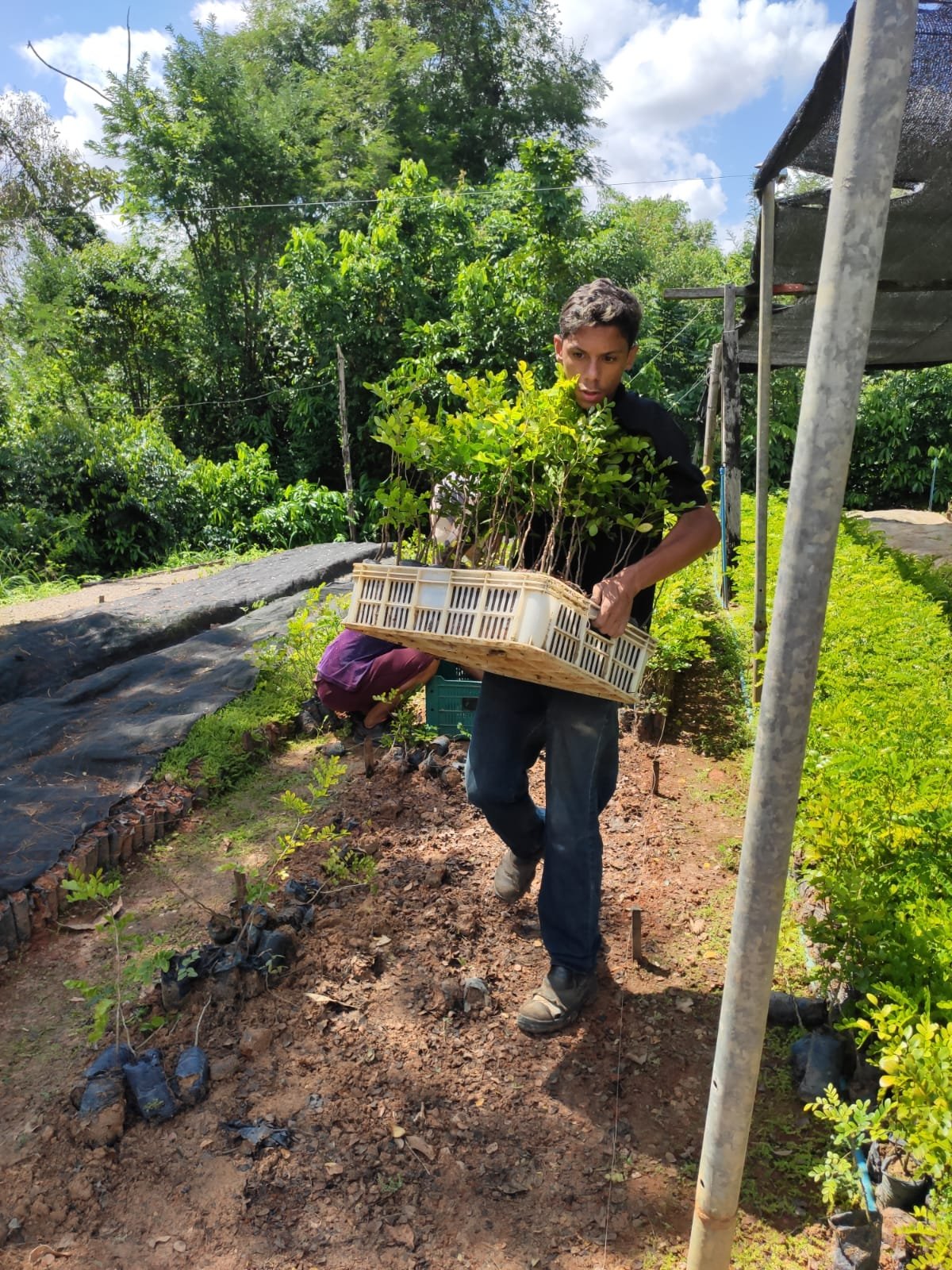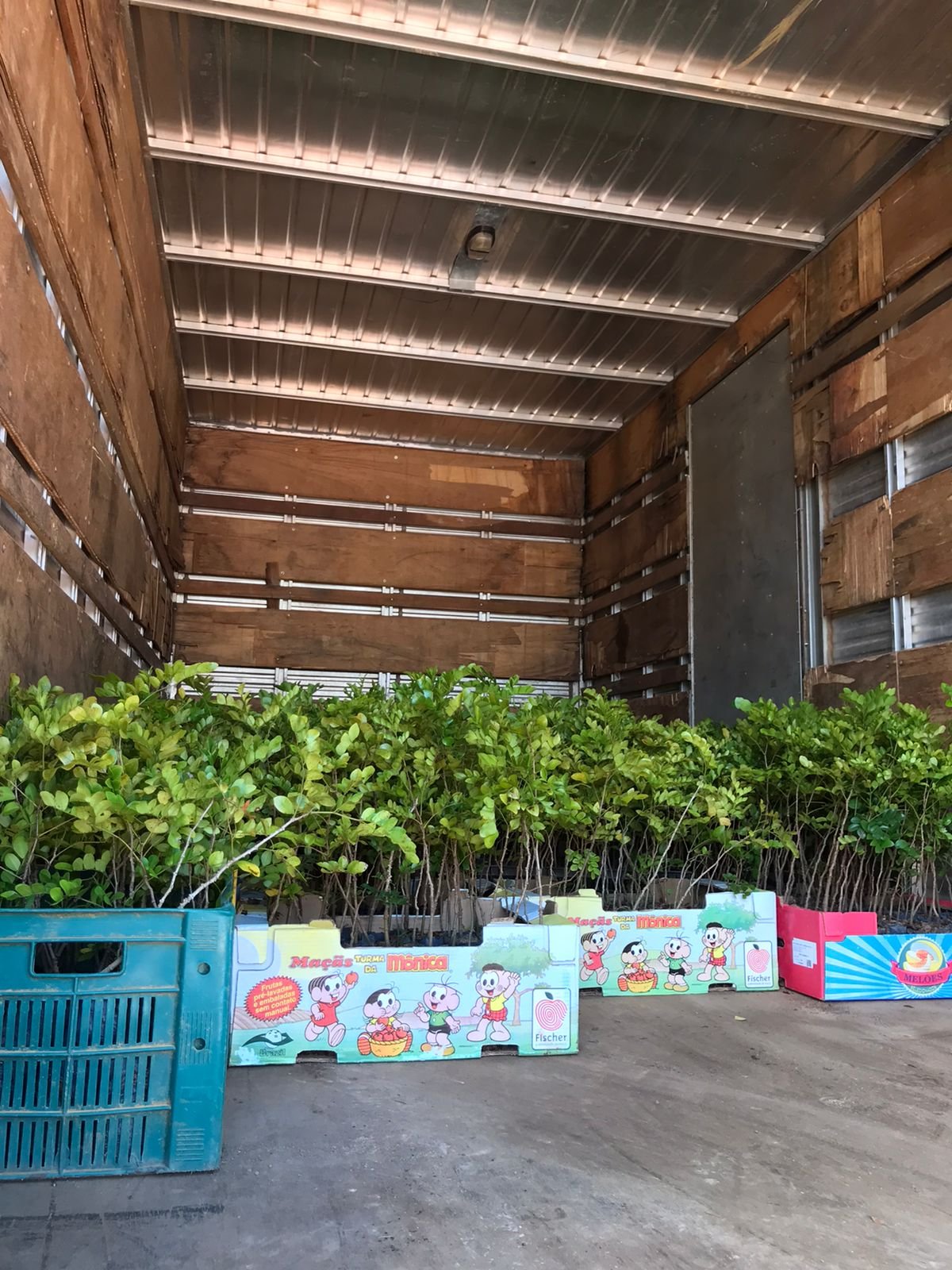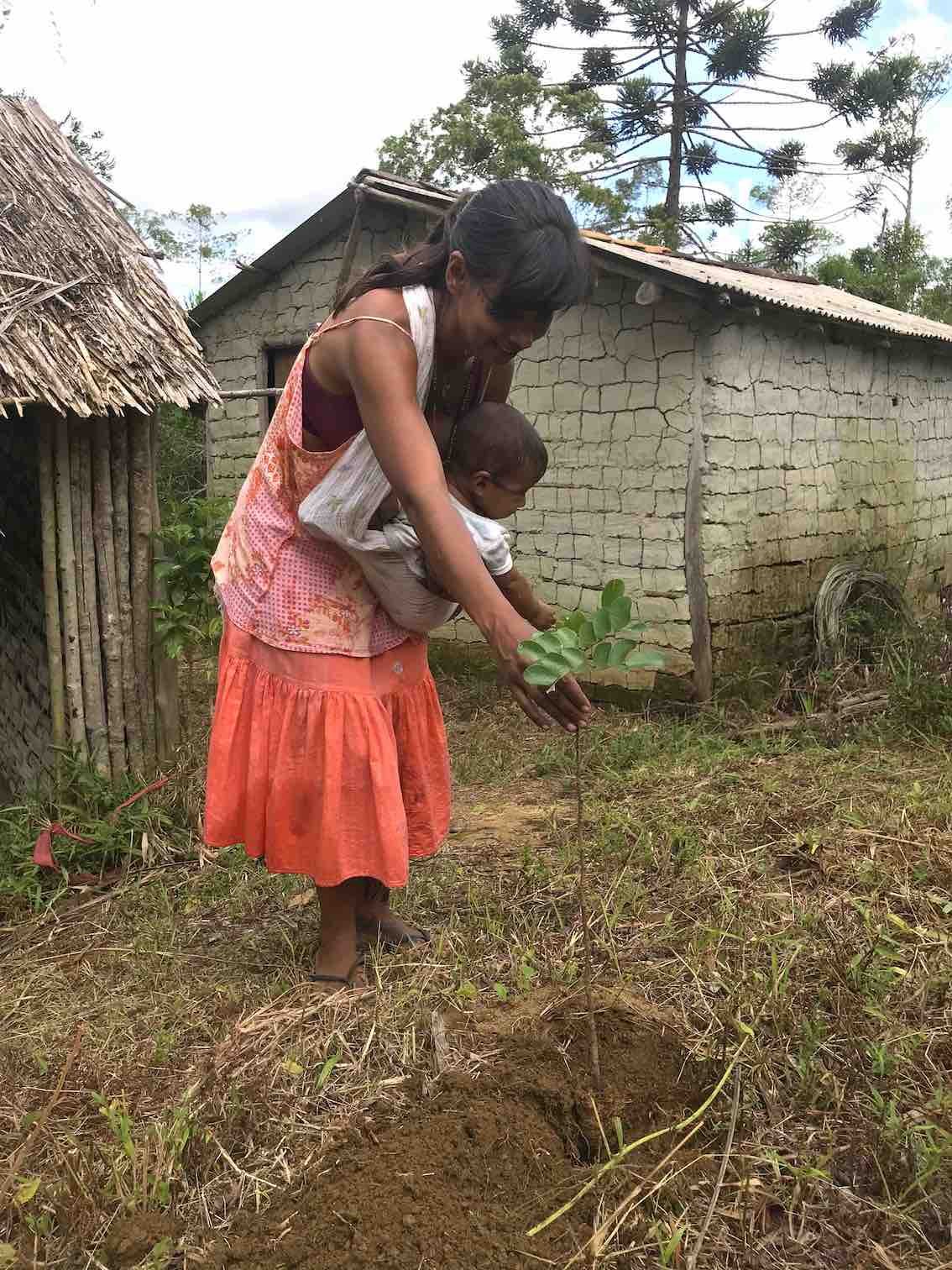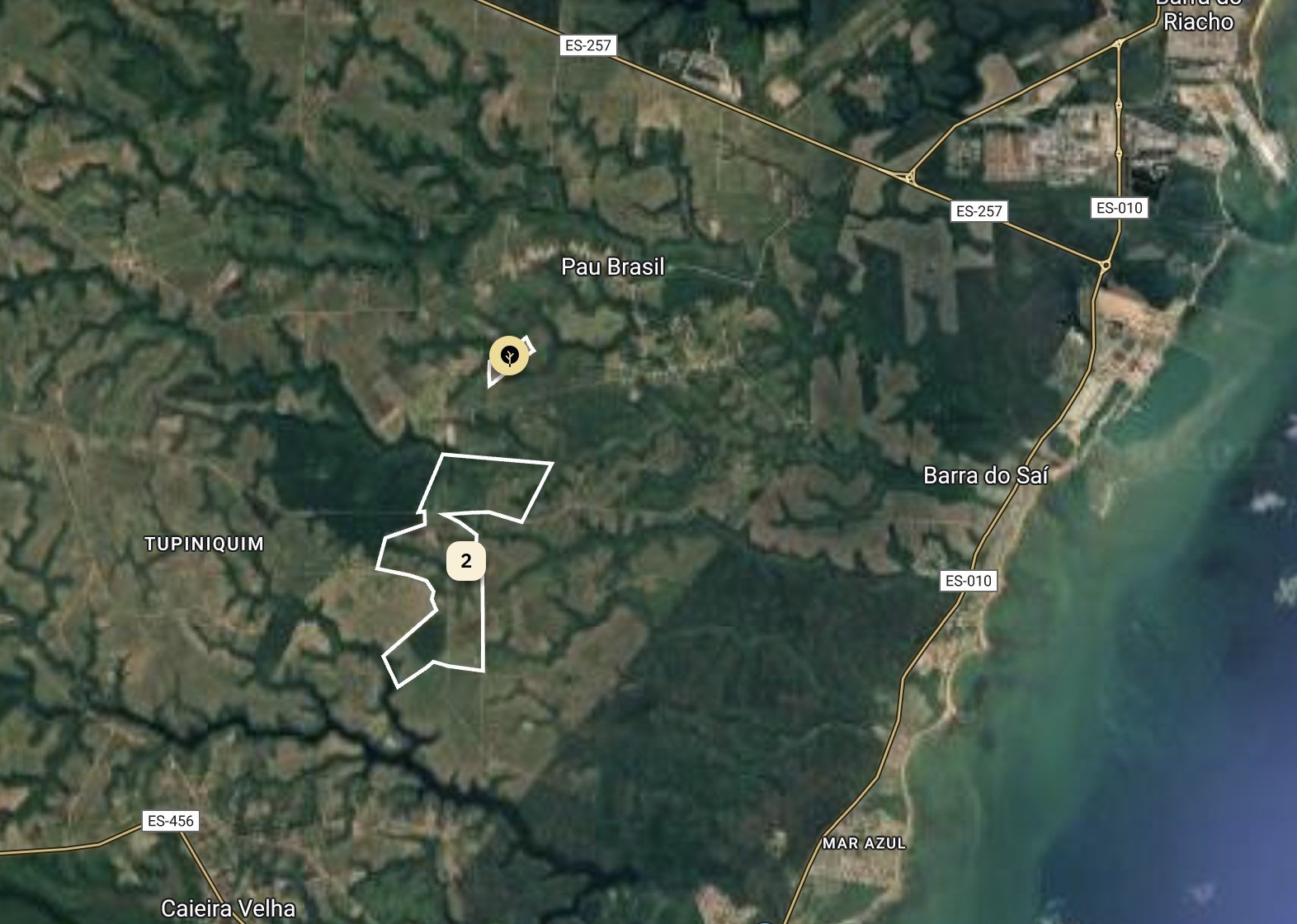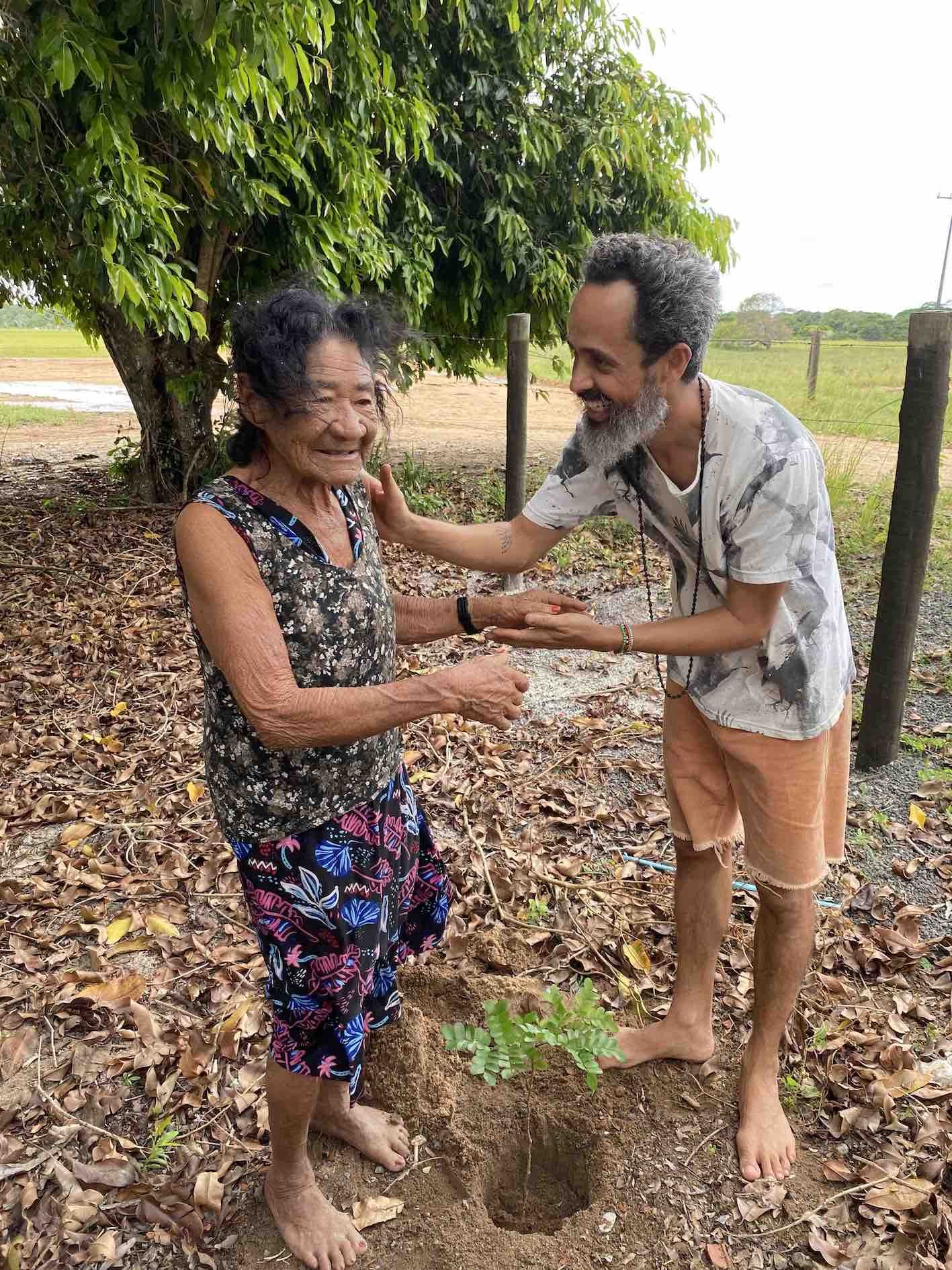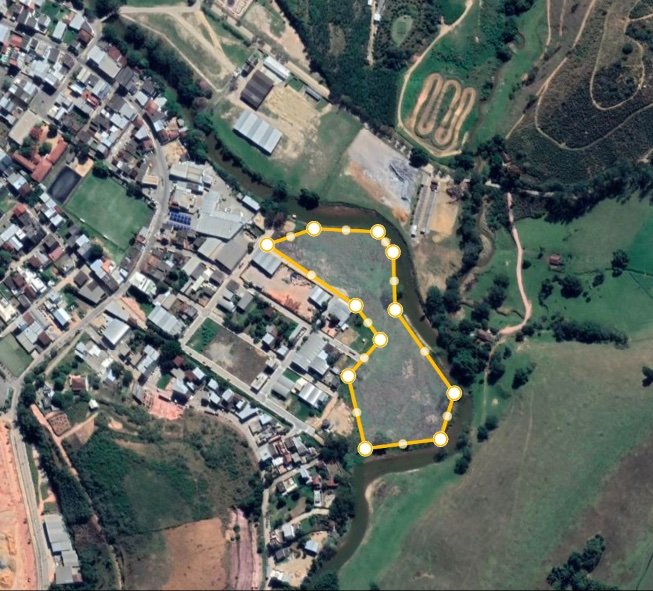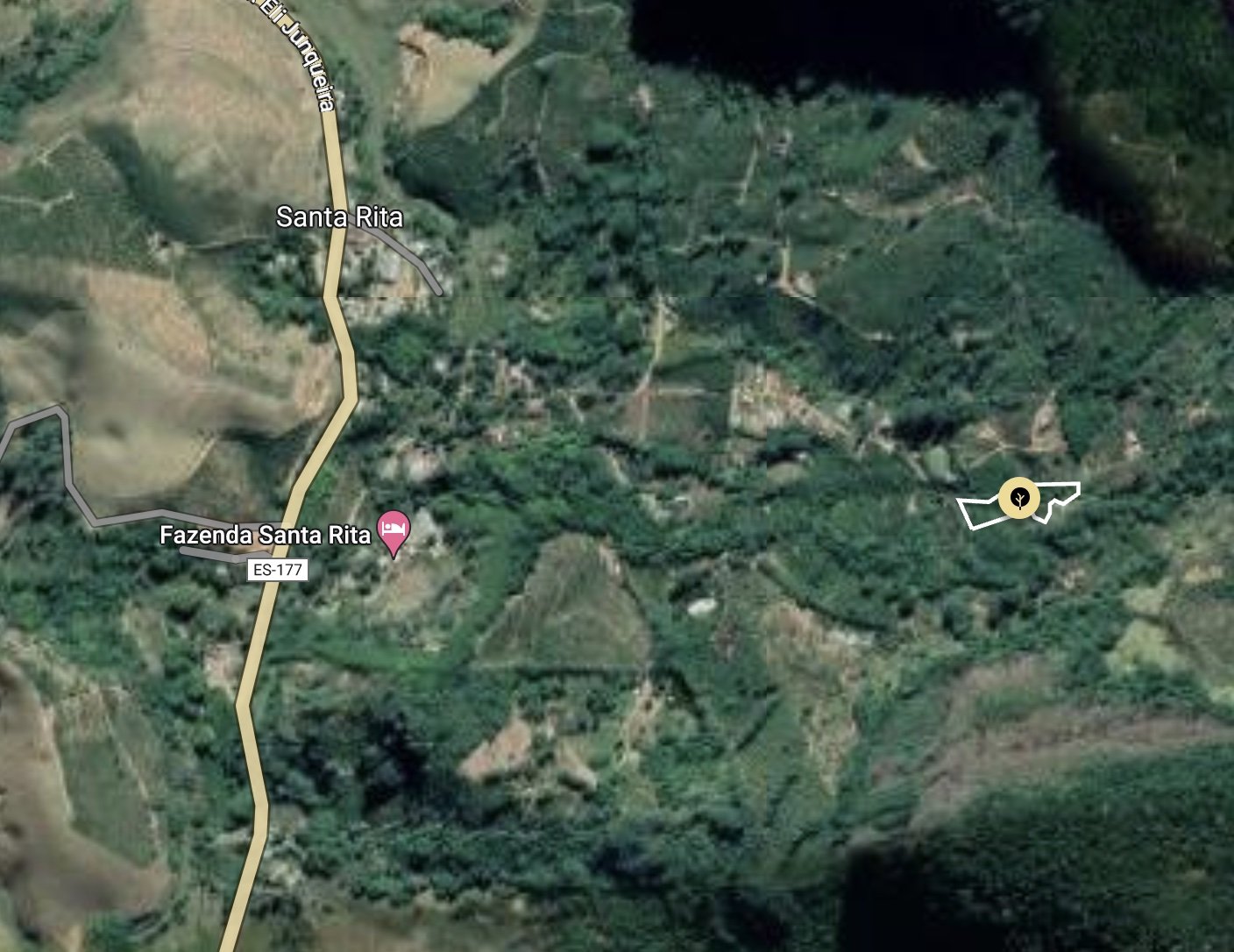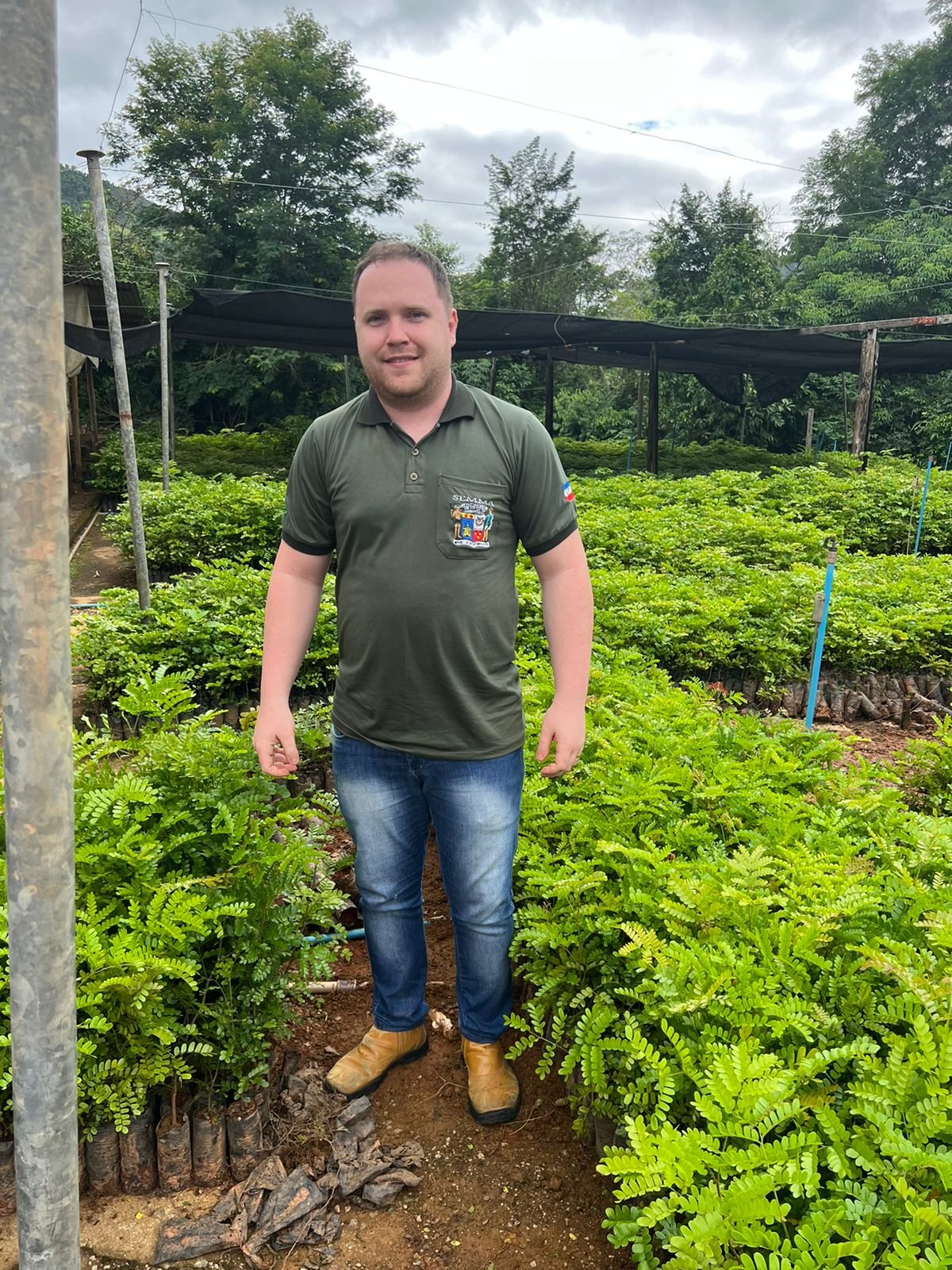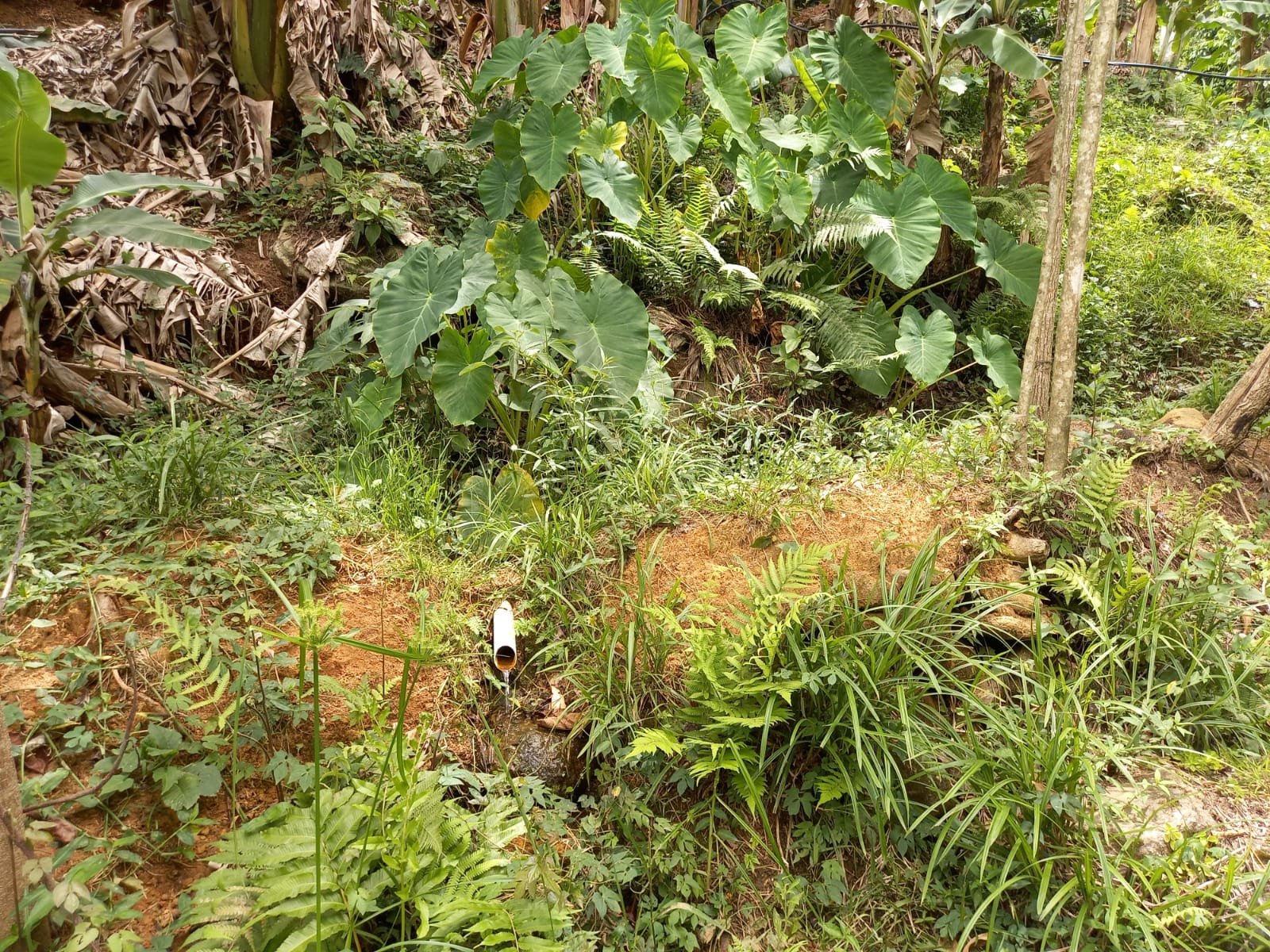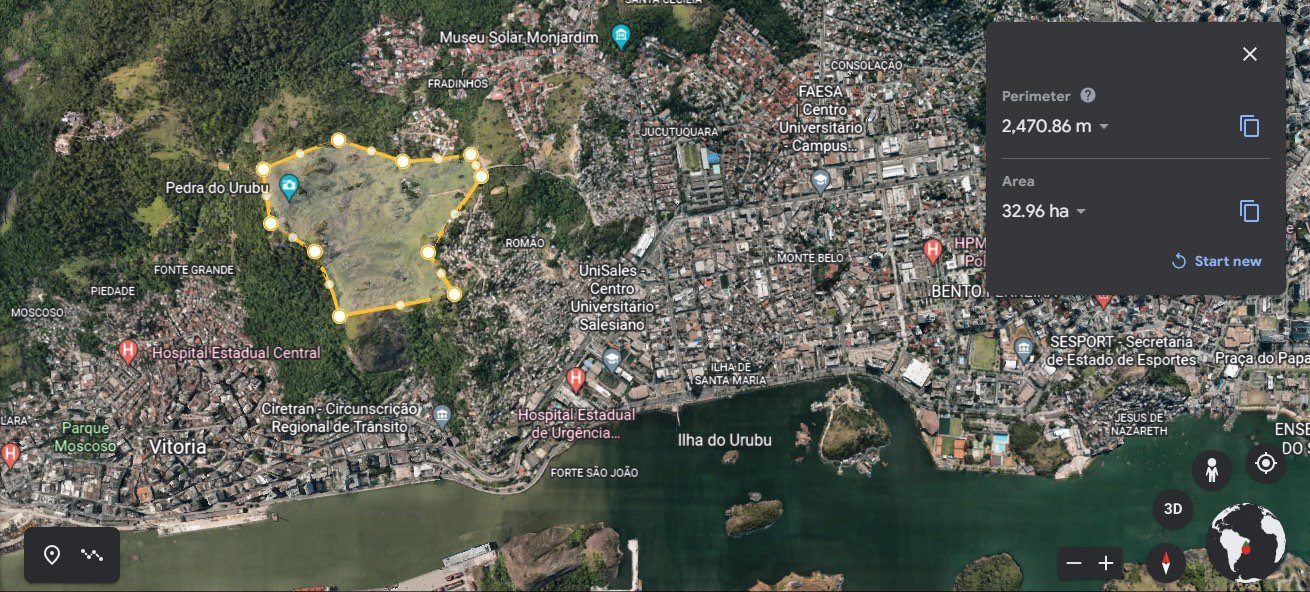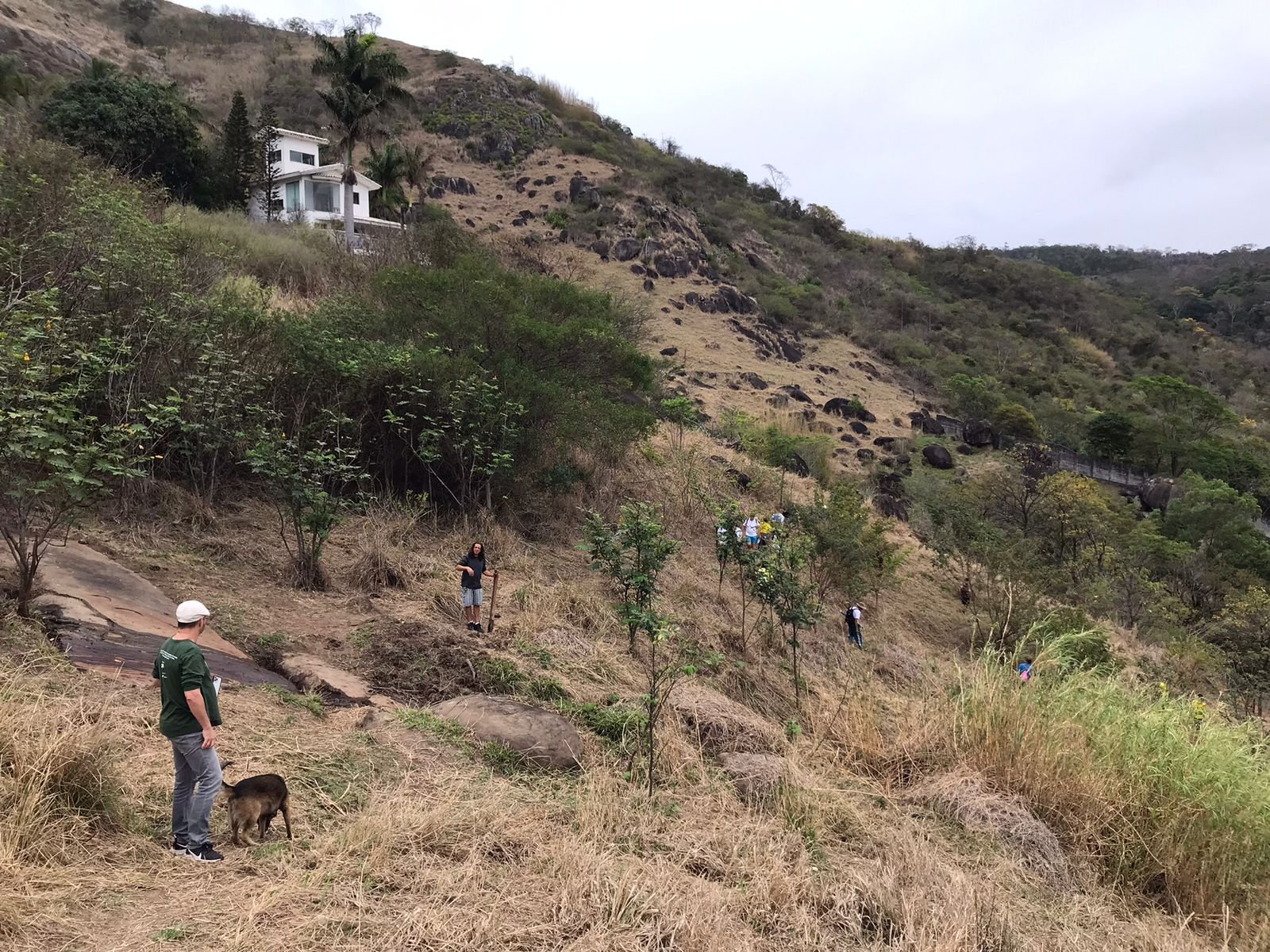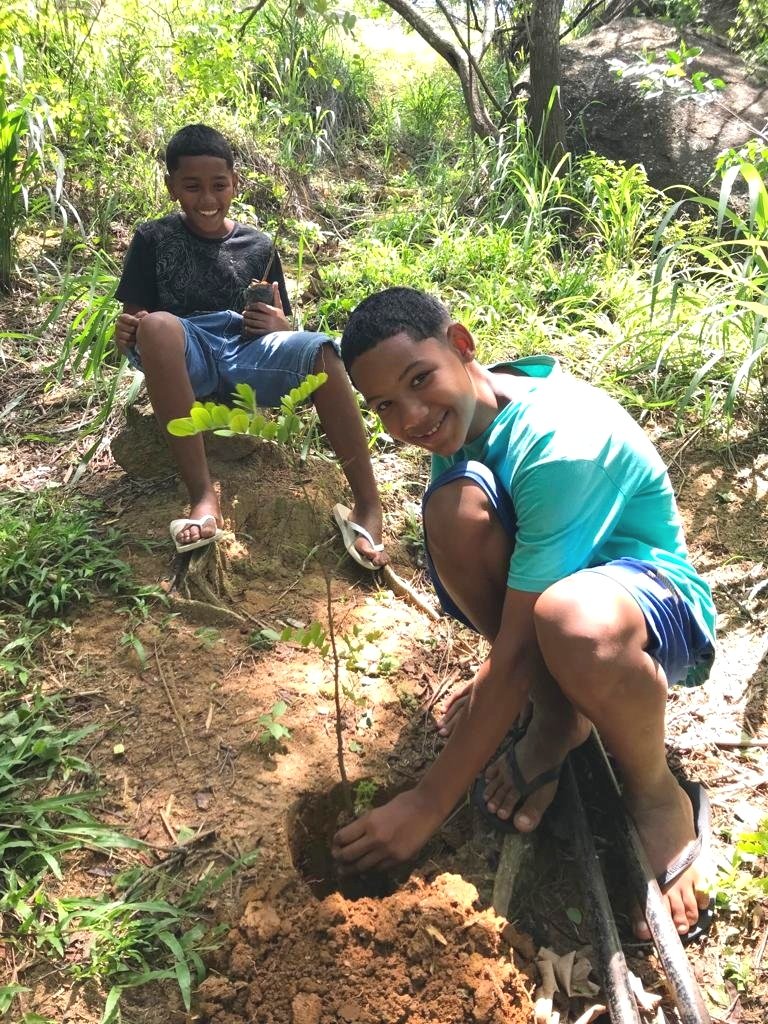14,000 new saplings in the ground…
…and new partnerships are blooming into life.
What is the Trees of Music project doing in Brazil?
Since October 2022, over 14,000 saplings of the endangered pernambuco tree have been distributed from our nursery at the Federal University of Espírito Santo, and planted at various locations around this state on the Atlantic coast. This tree is the the national symbol of Brazil and the preferred material for making violin bows, and it also has a wide range of positive ecological impacts. Learn more at Trees of Music.
Our goal is to reforest areas that used to be part of the Atlantic Forest, but have been degraded over the last few centuries as traditional land management gave way to mining, timber harvesting, industrial farming and other non-sustainable practices.
Indigenous partners taking saplings
Various Indigenous leaders asked for saplings for their communities. A Tupiniquim aldeia (traditional settlement) called Aldeia Areal in Regência received 50, and 160 went to the Guarani, which was as many as Priscila could carry up their sacred see the blog post here mountain (see the blog post here). These have been planted around two of their traditional villages, but there is much more work to be done here; the Guarani occupy 240 hectares in the state, much of it degraded and awaiting regeneration.
This community has asked us to help with a much larger project, which will be beautiful and of profound importance for the region. Indigenous-led projects are consistently the most successful regeneration projects - if you or your business can help, please get in touch. 50 donated to the Tupiniquim Indigenous nation
Hydrology and biodiversity
Many of our trees have been added to the buffer zone of a conservation area, expanding the territory of the various animals that live there - many of which are endemic to the region. Others are now growing along the banks of the Benevente River or have been planted around springs; the goal here is to help filter rain into the soil and improve the hydrology of the region.
1,400 planted along the bank of the Benevente River
Agroforestry
Still more have been given to farmers and landowners, including many that are being incorporated into agroforestry systems. Agroforestry is a high-yield system of agriculture that incorporates trees and a wide variety of species into the community of plants in an area.
5,000 for local farmers with Muqui city
As well as providing a harvest that extends over months rather than days (as with conventional monoculture farming), and a range of foods meeting different nutritional requirements, each species adds something unique. Some repel insects or attract insect predators, others contribute nitrogen to the soil or shade the salad leaves from the harsh Brazilian sun. Together they contribute to the resilience and abundance of the collective
Agroforestry is also the 'A' in RAIN.
Reforestation
The Atlantic forest used to extend along the Atlantic coast of Brazil and for hundreds of miles inland, but around much of its original forest has been converted to ranches, cropland and urban areas - around 90%, though estimates differ. Its biodiversity is dense, with up to 450 species of tree per hectare in some areas, and many of the species are found nowhere else on Earth.
The good news is that any newly reforested area is soon visited by the birds and animals looking for homes and food, and they bring with them a wide array of seeds in their droppings, ready to germinate and bring back biodiversity. The forest can return, and quickly. Please consider lending your support.
1,000 in partnership with Ecomaris Institute, in a campaign to reforest 32 hectares
The work continues, as more communities, individuals and associations ask us for trees. With your help, we will be able to grow more and continue this vital work.
Please consider supporting the Atlantic Forest, her biodiversity, her rivers and the Indigenous groups who have lived in her shade for millennia.

